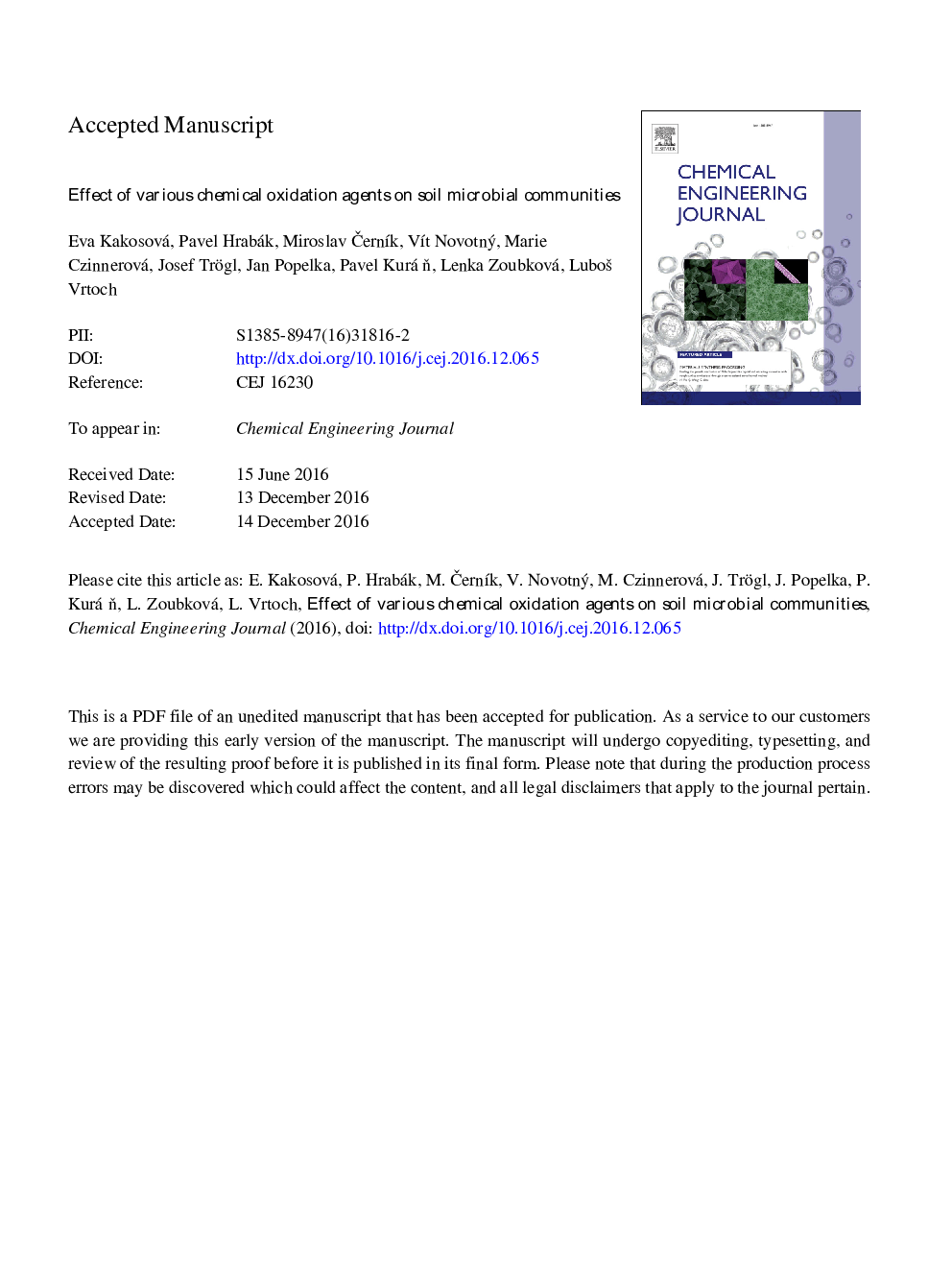| Article ID | Journal | Published Year | Pages | File Type |
|---|---|---|---|---|
| 4763147 | Chemical Engineering Journal | 2017 | 34 Pages |
Abstract
Chemical oxidations by hydrogen peroxide and/or persulfate represent promising pretreatment step foregoing bioremediation for removal of hydrophobic contaminants. The feasibility of hydrogen peroxide-based and sodium persulfate-based oxidation treatments on the real contaminated soil collected from petroleum lagoon deposit were evaluated. The results showed poor insignificant degradation of pollutants (expressed as C10-C40 concentration) in hydrogen peroxide variants (avg. of 9% ± 30% decrease) in comparison to persulfate treatment variants (avg. of 55% ± 13% decrease). In accordance, microbial community activity indicators showed substantial inhibition of viability only by persulfate, base and Fe3+ activated variants. The highest contaminant removal efficiency was achieved by Fe3+ activated persulfate system (78% ± 3%). Persulfate was thus demonstrated as a promising chemical oxidant for degradation of petroleum contaminants, however activation mechanism and initial dosage of the oxidant should by chosen carefully in respect to the soil microorganisms.
Keywords
Related Topics
Physical Sciences and Engineering
Chemical Engineering
Chemical Engineering (General)
Authors
Eva Kakosová, Pavel Hrabák, Miroslav ÄernÃk, VÃt Novotný, Marie Czinnerová, Josef Trögl, Jan Popelka, Pavel KuráÅ, Lenka Zoubková, ĽuboÅ¡ Vrtoch,
